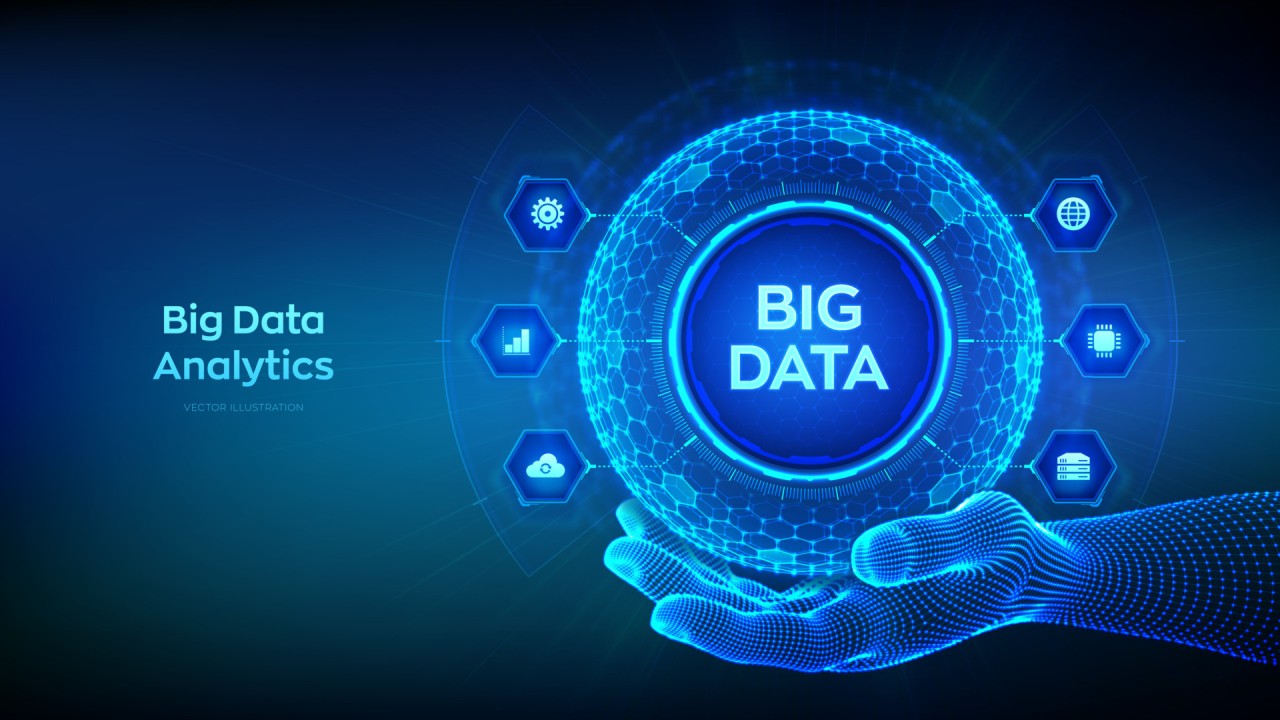Big Data refers to large and complex datasets that are difficult to process using traditional data processing applications. This vast amount of data comes from various sources, including social media, sensors, mobile devices, and enterprise systems. Big Data is characterized by its volume, velocity, variety, and veracity, presenting both challenges and opportunities for organizations seeking to extract valuable insights.
Characteristics of Big Data
Big Data is defined by four primary characteristics:
- Volume: Refers to the vast amount of data generated and collected from various sources, including structured, semi-structured, and unstructured data formats.
- Velocity: Describes the speed at which data is generated and processed, often in real-time or near-real-time, requiring rapid analysis and response.
- Variety: Encompasses the diversity of data types and formats, including text, images, videos, sensor data, and social media posts, among others.
- Veracity: Refers to the quality and reliability of data, including its accuracy, completeness, and consistency, which are essential for meaningful analysis and decision-making.
Importance of Big Data
Big Data holds significant importance in today’s digital economy:
- Business Insights: Provides organizations with valuable insights into customer behavior, market trends, and operational efficiencies through advanced analytics.
- Innovation and Competitiveness: Drives innovation by enabling new product development, personalized customer experiences, and data-driven decision-making.
- Scientific Research: Facilitates scientific discoveries and advancements in fields such as genomics, climate modeling, and healthcare through large-scale data analysis.
- Social Impact: Supports public policy decisions, disaster response efforts, and healthcare initiatives by analyzing large datasets to identify patterns and trends.
Technologies and Tools for Big Data
Big Data processing and analysis rely on various technologies and tools:
- Hadoop: An open-source framework that facilitates distributed storage and processing of large datasets across clusters of computers using MapReduce programming model.
- Apache Spark: A fast and general-purpose cluster computing system for Big Data processing, supporting in-memory computation and iterative algorithms.
- NoSQL Databases: Non-relational databases designed for scalability and flexibility to handle semi-structured and unstructured data types.
- Machine Learning and AI: Algorithms and techniques used to extract patterns and insights from Big Data, enabling predictive analytics and decision support systems.
- Data Visualization Tools: Software applications that transform Big Data into interactive visual representations (e.g., charts, graphs) for easier understanding and interpretation.
Applications of Big Data
Big Data is applied across various domains and industries:
- Retail and E-commerce: Analyzing customer purchase history and behavior to personalize marketing campaigns and optimize inventory management.
- Healthcare: Using patient data and medical records for disease surveillance, personalized medicine, and clinical decision support systems.
- Finance: Detecting fraudulent activities, predicting market trends, and optimizing trading strategies based on real-time market data.
- Telecommunications: Analyzing call records and network data to improve network performance, predict customer churn, and optimize resource allocation.
- Smart Cities: Using sensor data and IoT devices to improve urban planning, optimize transportation systems, and enhance public safety.
Challenges in Big Data
Despite its benefits, Big Data presents several challenges:
- Data Privacy and Security: Protecting sensitive data from unauthorized access, breaches, and misuse while complying with regulatory requirements (e.g., GDPR, CCPA).
- Data Integration: Integrating and harmonizing data from disparate sources to ensure consistency, accuracy, and reliability for analysis.
- Scalability: Scaling infrastructure and technologies to handle increasing data volumes and processing demands effectively.
- Skills Gap: Shortage of skilled data scientists, analysts, and engineers proficient in Big Data technologies and analytics techniques.
Future Trends in Big Data
Future developments in Big Data are expected to focus on:
- Edge Computing: Processing and analyzing data closer to the source (e.g., IoT devices) to reduce latency, bandwidth usage, and improve real-time decision-making.
- AI-driven Analytics: Advancements in machine learning and AI algorithms for automated data analysis, pattern recognition, and predictive modeling.
- Blockchain Technology: Using blockchain for secure and transparent data transactions, improving data integrity and traceability.
- Ethical Data Use: Implementing ethical guidelines and frameworks for responsible data collection, storage, and usage to protect privacy and foster trust.
Conclusion
In conclusion, Big Data represents a transformative force driving innovation, efficiency, and decision-making across industries. By leveraging advanced technologies and analytics tools, organizations can unlock valuable insights from large and complex datasets to gain competitive advantages, improve operational efficiencies, and address complex challenges. As Big Data continues to evolve, addressing challenges such as data privacy, scalability, and skills development will be crucial in maximizing its potential and ensuring responsible and ethical use of data in the digital age.





+ There are no comments
Add yours